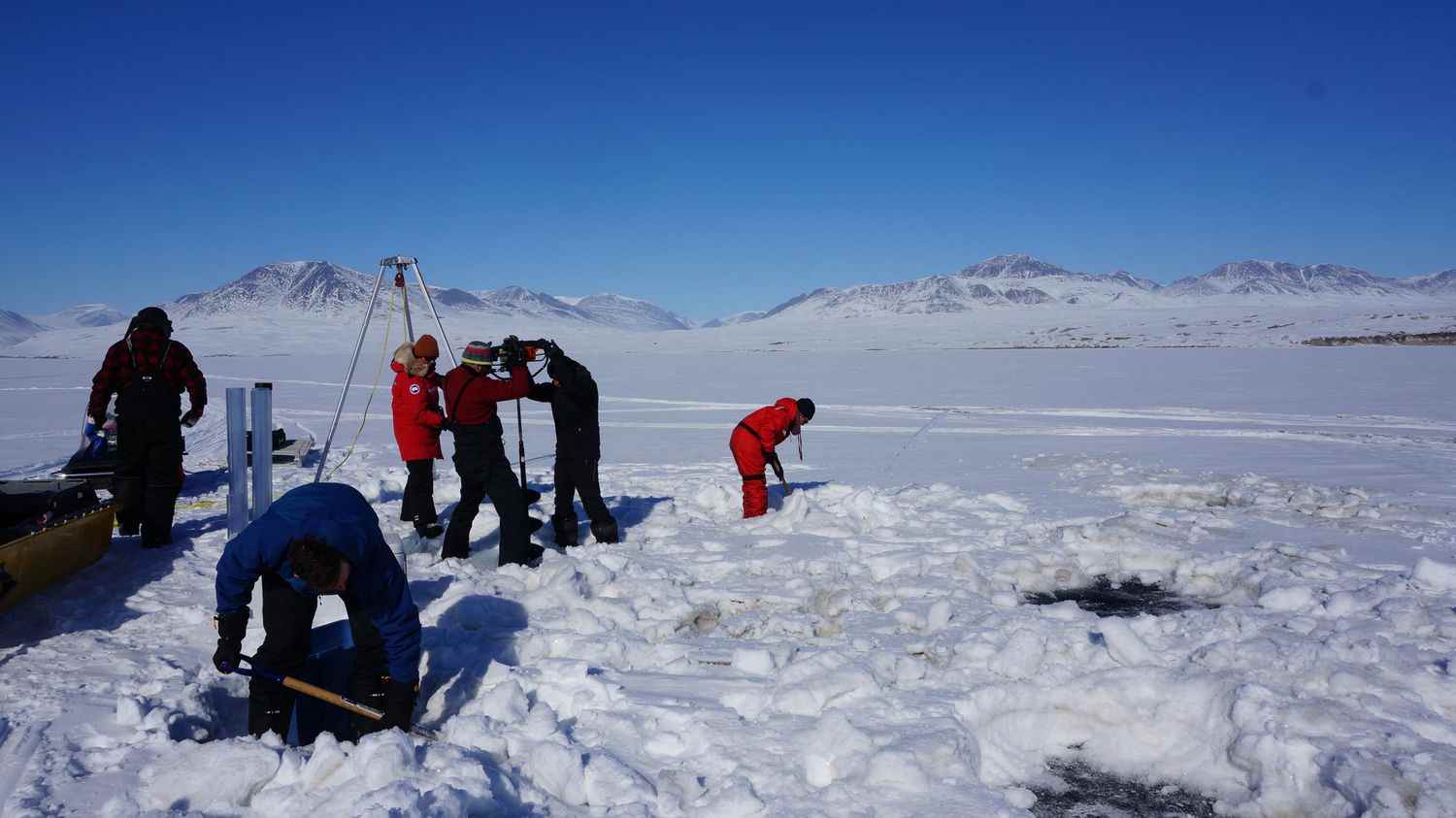With rising temperatures, viruses hitherto preserved in the ice could resurface. According to a study published in the Royal Society’s biological research journal “Proceedings B”Wednesday, October 19,Global warming could cause a “viral overflow” from the Arctic, by allowing viruses to come into contact with new hosts in other environments.
Human, animal, plant, moss… Viruses need a host to replicate and spread, using if necessary a host lacking immunity, as shown by the recent Covid-19 pandemic with the ‘Man.
“The probability of dramatic events remains very low”, explained Audrée Lemieux, of the University of Montreal, first author of the study. But according to the Canadian researchers behind this work, the risk could increase with continued global warming, as new hosts could venture into previously inhospitable regions. The possibility of an overflow is “completely unpredictable, and its consequences too, ranging from a benign character to a real pandemic”, she added.
Canadian scientists investigated whether climate change could favor such a scenario in the Arctic environment of Lake Hazen, the largest lake beyond the Arctic Circle in Canada’s far north. They took samples from the bed of a river that feeds it, during the summer, when the ice melts, as well as from the bottom of the lake. By analyzing the sediments, “this allowed us to determine which viruses were in a given environment, and which potential hosts were also there“, explained to AFP Stéphane Aris-Brosou, associate professor in the department of biology at the University of Ottawa, who supervised the study.
The team then set out to find out how susceptible the viruses were to switching hosts, looking at the equivalent of their respective family trees. And for good reason: similar genealogies suggest that the virus evolved with its host, while differences indicate that it could have changed hosts. And if he’s done it at least once, he’s likely to do it again. However, the analyzes showed great differences in the genealogical trees of the viruses and their hosts in the sediments extracted from the bottom of the lake.
However, these differences were less pronounced in the bed of the river feeding the lake. The researchers speculate that meltwater from glaciers erodes bed sediments, thereby limiting interactions between viruses and potential hosts. On the other hand, the acceleration of the melting of the glaciers feeding the lake has also increased the quantity of sediments which are transported there. “It’s going to put hosts and viruses in contact that normally wouldn’t,” noted Audrée Lemieux.
In 2016, the anthrax bacterium, the cause of anthrax, reappeared in Siberia, threatening the semi-nomadic people who occupy this inhospitable tundra.
